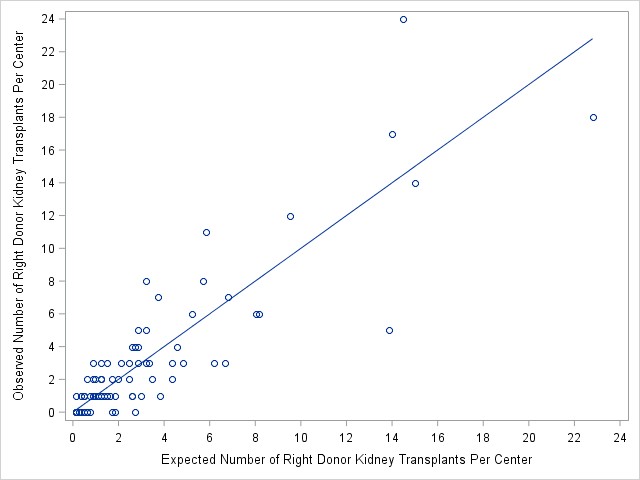Distribution And Outcomes Of Donor Right Kidneys In A National Paired Kidney Exchange Program
1UCSF, San Francisco, CA, 2ECU, Greenville, NC, 3Georgetown Univ, Washington, DC, 4NKR, Babylon, CA, 5NKR, Babylon, NY, 6UCLA and Terasaki Research Institute, Los Angeles, CA
Meeting: 2019 American Transplant Congress
Abstract number: B298
Keywords: Graft survival, High-risk, Kidney transplantation
Session Information
Session Name: Poster Session B: Kidney Paired Exchange
Session Type: Poster Session
Date: Sunday, June 2, 2019
Session Time: 6:00pm-7:00pm
 Presentation Time: 6:00pm-7:00pm
Presentation Time: 6:00pm-7:00pm
Location: Hall C & D
*Purpose: Left living donor kidneys for transplant (txp) are preferred to right living donor kidneys for longer renal vein length which decreases technical difficulty of implantation. We studied the distribution and outcomes after kidney txp of right donor kidneys in a national paired kidney exchange program to see whether some member centers were avoiding right living donor kidneys and to compare outcomes of right verses left living donor txps.
*Methods: We retrospectively reviewed donor kidney anatomy, distribution of right kidney txps across participating centers, and graft survival in the National Kidney Registry (NKR) between 2012 – 2017. Graft survival curves were estimated using the Kaplan-Meier method and compared by the log-rank test. Cumulative incidence function for death-censored graft failure (DCGF) was estimated and compared by Gray’s test.
*Results: Of 2,042 txps with donor organ information, 523 (12.4%) were right kidney donors. Median follow-up was 30 months. Donors of right kidneys were more likely to be multiple renal artery kidneys compared to donors of left kidneys (27% vs 21.4%, p=0.05). Recipients of right kidneys were frequently chain end waitlist, and lower calculated PRA compared to recipients of left kidneys (26.9% vs 19.2%, p=0.006 and median = 1.4% vs 24.9%, p=0.023, respectively). Plot of observed to expected number of donor right kidney txps per center is provided in Figure 1. Of the 80 centers, the rate of donor right kidney txp was above expected in 46%, assuming a 12.4% rate of donor right kidney txp. Kaplan-Meier (unadjusted) graft survival at 1-, 2- and 3-years was 97.6%, 95.5%, and 93.5%, respectively, with donor left kidneys compared 95.6%, 93.0%, 90.3% with donor right kidneys (p=0.143). Risk of death-censored graft failure was not significantly different between the two groups (p=0.377). Risks of all-cause graft failure and death-censored graft failure between transplants of donor right and donor left kidneys were not differentially affected by donor anatomy (multiple renal artery vs conventional; p=0.581 and p=0.693, respectively).
*Conclusions: Despite the preference of txp surgeons for left living donor kidneys, the distribution of right living donor kidneys seems to be normally distributed across all centers in the NKR paired donation program. We find no evidence that programs selectively avoid right kidneys that are offered through paired kidney exchange to transfer risk to other member centers.
To cite this abstract in AMA style:
Roll G, Irish W, Cooper M, Ronin M, Hil G, Waterman AD, Leeser DB. Distribution And Outcomes Of Donor Right Kidneys In A National Paired Kidney Exchange Program [abstract]. Am J Transplant. 2019; 19 (suppl 3). https://atcmeetingabstracts.com/abstract/distribution-and-outcomes-of-donor-right-kidneys-in-a-national-paired-kidney-exchange-program/. Accessed December 6, 2025.« Back to 2019 American Transplant Congress

